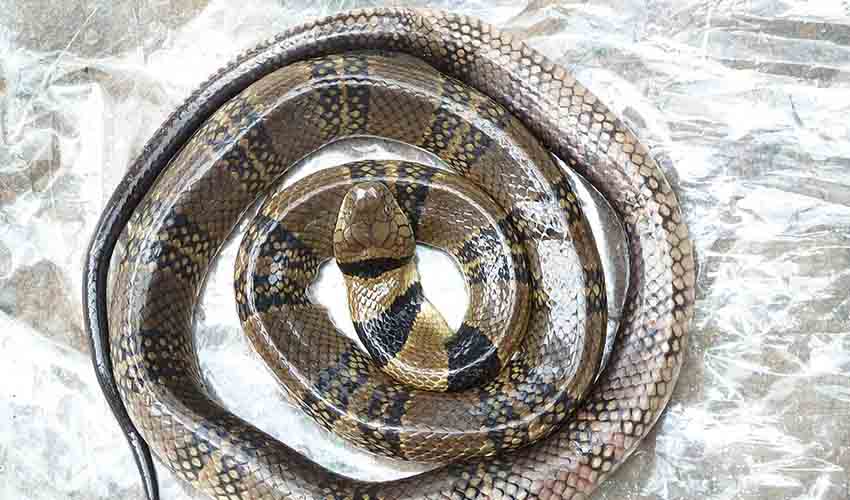Naja – True cobras
Famous for their hood display — a bluff that works!
This genus includes some of the most iconic and feared snakes in the world. These snakes are famous for their hood—a distinctive feature they display when threatened by expanding the ribs behind their heads. Found across Africa and Asia, Naja species are incredibly diverse, with over 30 recognized types. While they vary in size, color, and habitat, all share the same reputation: striking beauty paired with potent venom.
What makes Naja cobras unique among other venomous snakes is their defensive behavior. When feeling threatened, they raise the front part of their bodies, flatten their necks into a hood, and often hiss loudly—an unmistakable warning signal. This display makes them look bigger and more intimidating to potential predators. Some species, like the spitting cobras, have taken things a step further. These cobras can accurately “spit” or spray venom from their fangs over distances of up to two meters (about 6.5 feet). The venom can cause intense pain and even temporary blindness if it lands in the eyes. But even these behaviors are mostly defensive—cobras would much rather flee than fight.
Despite their dangerous reputation, Naja cobras are incredibly important to ecosystems. They help control populations of rodents, frogs, and other small animals. Their venom, while deadly in large doses, has also been studied for medical purposes, including research into painkillers and treatments for diseases. In the wild, cobras tend to avoid humans, and bites usually occur only when they are accidentally stepped on, cornered, or provoked. Still, the effects of their bites can be serious, as cobra venom attacks the nervous system and can cause paralysis if not treated quickly.
Species in this genus
Caspian cobra
A cobra most adapted to colder climates
Philippine cobra
A snake to be respected (and definitely not messed with!)
Cape cobra
Often preyed upon by mongooses, who seem to have no fear of their venom
Egyptian cobra
The pharaoh’s bodyguard
Equatorial spitting cobra
Can accurately spit venom up to 2 meters (8 feet) away
Forest cobra
Largest of all true cobras and one of Africa’s most powerful snakes
Ringed water cobra
One of the few snake species truly specialized for an aquatic menu








